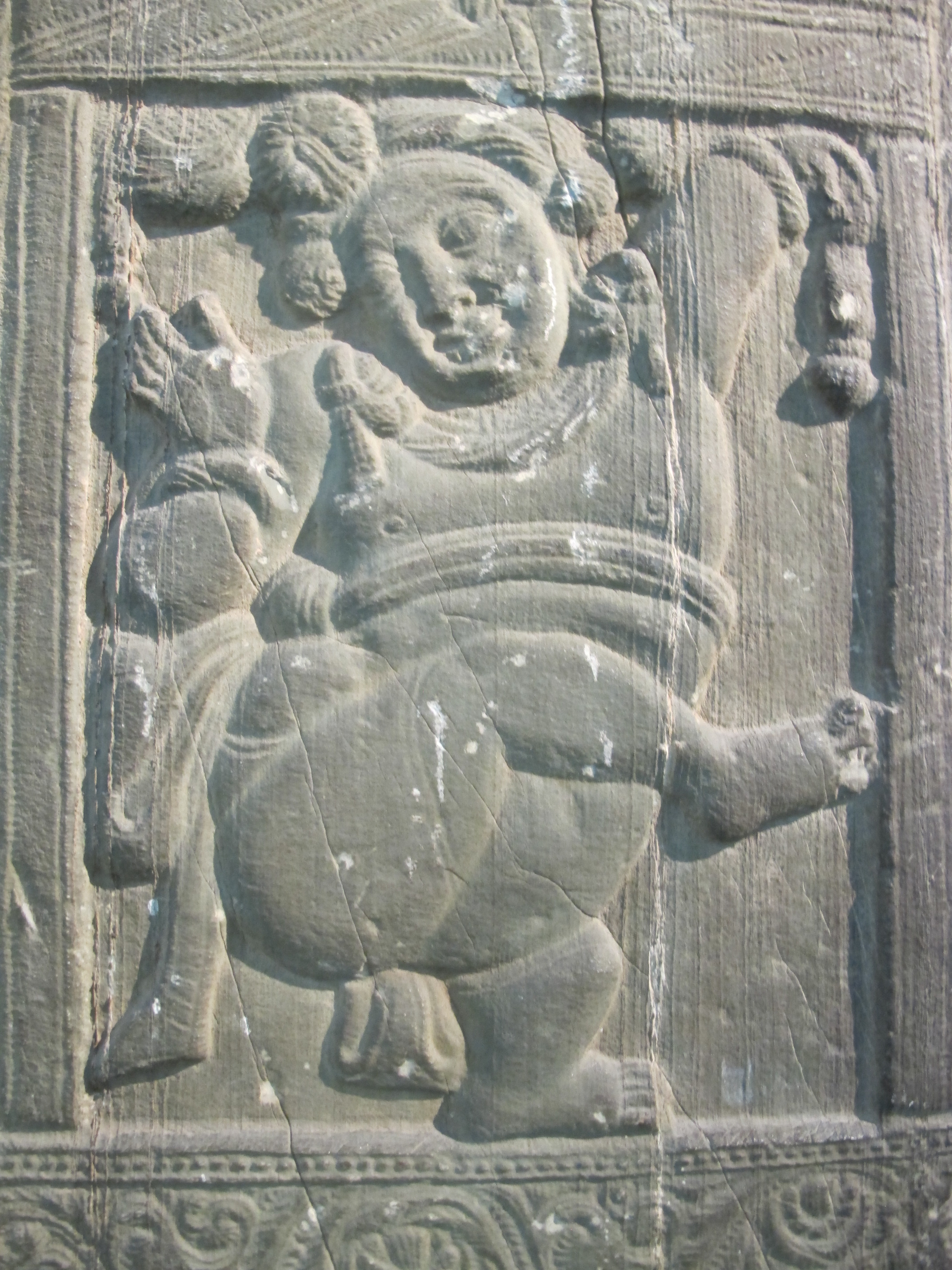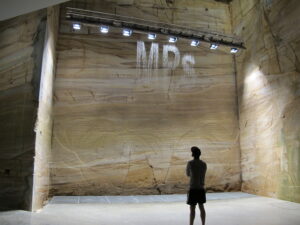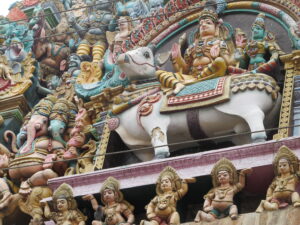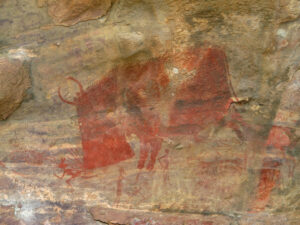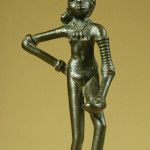
She was giving us quite an attitude. Her long arms were arrayed in bracelets, her right hand defiantly planted on her hip, which jutted out sideways. She was all sassy, impertinent, take-no-nonsense, and – according to scholars who should know – dancing. To us it looked like she could indeed get on the dance floor and do some hip-hop moves, except she stood in the National Museum in Delhi at about 8 cm tall, was cast in bronze and formed about 5000 years ago.
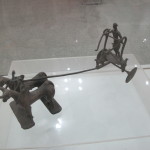
Across the room a playful chariot led by an equally graceful and oddly aroused male figure added more whimsy to a remarkable collection of remnants of the earliest Indus Valley civilization, the great Harappan.
For about 2000 years these people originally from Baluchistan developed a stable and sophisticated society across much of what is now northern India. Surprisingly, all the people, not just the upper classes, lived in solid stone houses and enjoyed a system of hot/cold running water and waste removal – long before the Romans reinvented that wheel.
The rest of the extensive space dedicated to the Harappan was filled with a huge collection of tools, pots and decorative crafts, somewhat typical of displays from such an ancient culture. There was some beautiful work in these and, if you spent the time, interesting insights into those people.
Nonetheless, the whole of the National Museum covers highlights of 3000 more years of Indian culture. In a half day visit, you can only absorb so much especially because little of it is covered in our education. “Western civ” classes tend to ignore societies that arose in parallel to those most directly influencing the West. (Editorial comment: When will museums like this recognize the problem of overload and offer multi-day passes so you can sip from the collection, not just gulp?)
So, what do we get from such a museum?
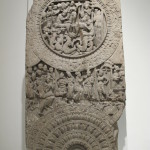
For one, it’s surprises like the charioteer and the dancing girl, astonishing art from the past. Even on a quick tour, many of these extraordinary works stop you and make you pay attention.
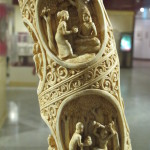
For us, there was also the elaborate portrayal of Siddhartha’s life on a two meter tall stone plinth from 2000 years ago, matched in a way by the delicate carving of vignettes of his life along the length of an equally tall ivory tusk, just a few hundred years old. Or the serene statue of Krishna from the renowned Gupta dynasty around the 5th century, heroic in the strength of his chest, graceful in the slight hips, and with a face at peace with the infinite.
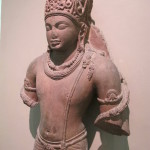
And surprises about what these cultures had achieved, what they believed and what happened to them. In these areas, we find we gain clues to the contemporary culture around us, notably here at the National Museum in the fervor and complexity of India’s religious beliefs.
Equally interesting to us are seemingly parallel developments in different cultures, like water systems or advances in tools and technologies. In some cases, we imagine that creativity and invention grow at like paces across the globe. For example, even comparing Maori history with Mayan, we’ve noticed parallels in the growth of regional powers, or principalities, out of tribal societies – along with the larger wars for control or wealth that resulted.
In other cases, even in pre-history, trade and contacts among cultures surely spread innovations and ideas about. It’s fascinating to see how globalization worked, even in the era of sailing ships and camel trade. A notable example of this is Buddhism, which emerged in India by the fourth century BC and supplanted Hinduism here for a while. It then spread throughout Asia, even though it eventually yielded to the rise of Hinduism again in its home country.
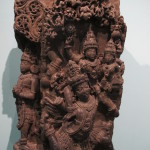
In many museum exhibits, we’ve seen how representational styles crossed cultures, whether along the Silk Road or through ocean trade. Here too we saw examples of this from the Greco-Roman period.
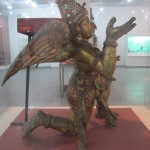
But the National Museum is full of intricate, stunning sculptures of great sophistication from that era. By the 5th century, the time of the Gupta Dynasty, Indians even seem to outdistance the west in producing remarkable stone and bronze imagery to celebrate their gods and beliefs – works that Europe did not rival again until the Renaissance.
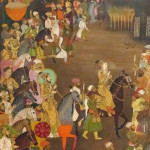
We had finished cruising the permanent collection, after soaking in some idea about the Gupta sculptures and squinting at even some of the colorful Mughal miniature paintings. But there’s always more.
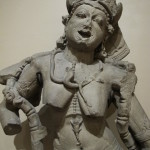
A special exhibit on the first floor was devoted to the artistic idealization of the body in its many aspects, as divine, as mortal, and so on. So many striking pieces of religious art to entice us – and these were from elsewhere in India, not even part of the regular collection.
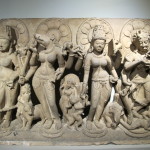
Out of all this amazing plenitude, and yes a bit tired with the demands on our attention, we did come away with the big picture – of the ancient culture, of religious practice, of the delights of the wealthy. And we took away memories of individual pieces that surprised us, stunned us or amazed us along the way.
Those made us feel like dancing along with that spritely little Harappan girl.
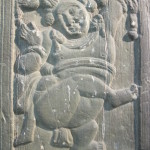
(Also, for more pictures from India, CLICK HERE to view the slideshow at the end of the India itinerary page.)


